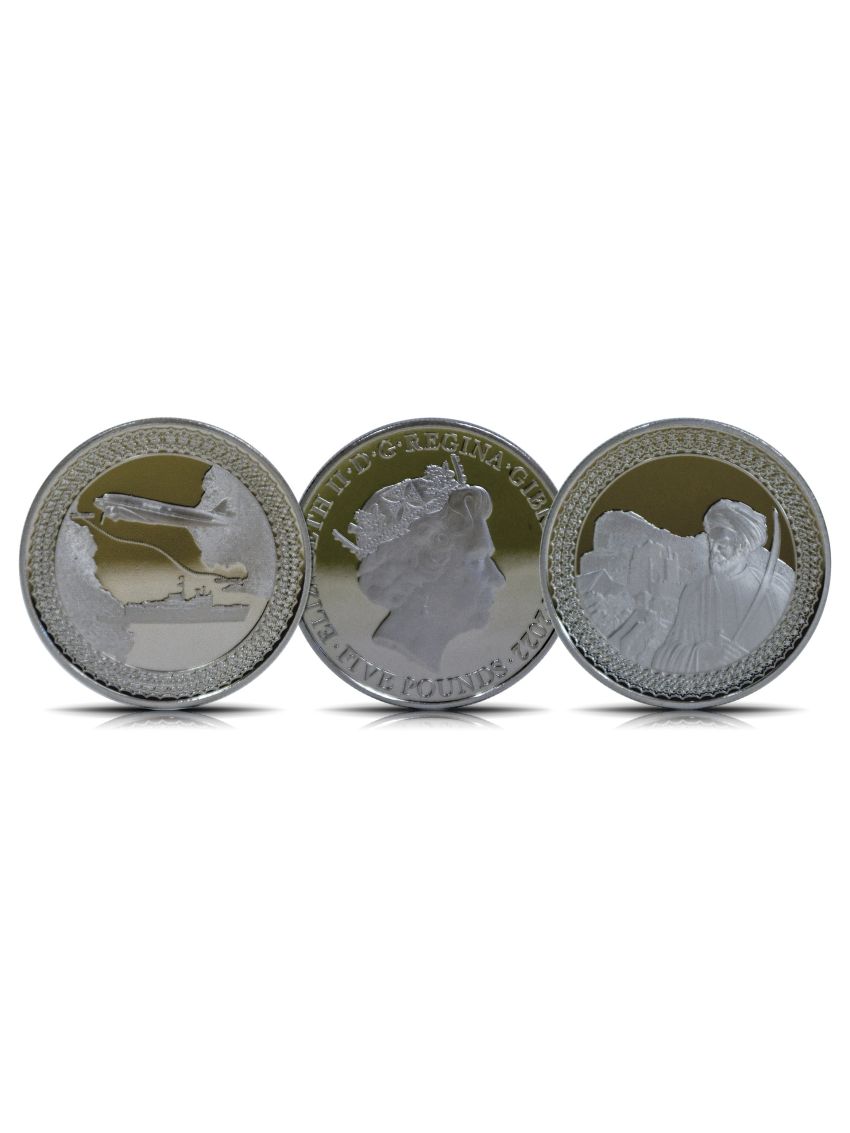Description
Coin 1 - Tariq Ibn Ziyad
Ṭāriq ibn Ziyād was a North African Berber General, he was a mawla (which translates to Lord/Guardian) to Musa Ibn Nusayer, who was Unmayyad governor of Ifriqiya which consisted of parts of Tunisia, Libya, and Algeria. In 711 Tariq was sent to conquer Visgothic Kingdom of Hispania (present day Spain and Portugal) which Gibraltar was part of since the collapse of the Roman Empire. He led an army of 700 men and crossed the strait of Gibraltar landing near the famous rock that has immortalized his name, Jabal al-Tariq (Mountain of Tariq).
On the 19th of July 711, he defeated the Visigoth King Roderick and went on to conquer half of Spain. The name Gibraltar was later derived from his name. Gibraltar was permanently by settled for the first time by the Moors and was under Moorish rule from 711ad-1309 and again from 1333 -1462.
Coin 2 - Mons Calpe & Gibraltar Airways
The Strait of Gibraltar is the only water passage between the Atlantic Ocean and the Mediterranean Sea. It is between Europe and Africa; on one side is the southern tip of Spain and Gibraltar, and on the other is northern Morocco and Ceuta. The distance between the Rock of Gibraltar and Morocco is only 7.7 nautical miles (14.24 kilometres, 8.9 miles) at its narrowest point.
On the 8th of June 1969, Spain closed the border with Gibraltar. The decision came when General Franco was angered at the prospect of Gibraltar's new Constitution. He feared this would negatively affect Spain's sovereignty claim over the Rock, which had been ceded to Britain in perpetuity under the Treaty of Utrecht in 1713. The closure tore families apart. Gibraltar turned to Morocco for labour and food and strengthened its ties with the UK. The economy underwent a fundamental change at that time which changed the focus from imports and labour by land to imports and labour by sea, largely from Morocco across the Strait. The GIBAIR DC-3 and the MV Mons Calpe, depicted on the coin design, were the two methods of transport between Gibraltar and Morocco. The closure also shaped Gibraltarians' sense of identity as a people. Franco's attempt to bring Gibraltar to its knees failed. It survived. After 13 difficult years, the border reopened for pedestrians on 15 December 1982, and fully on 5 February 1985.








